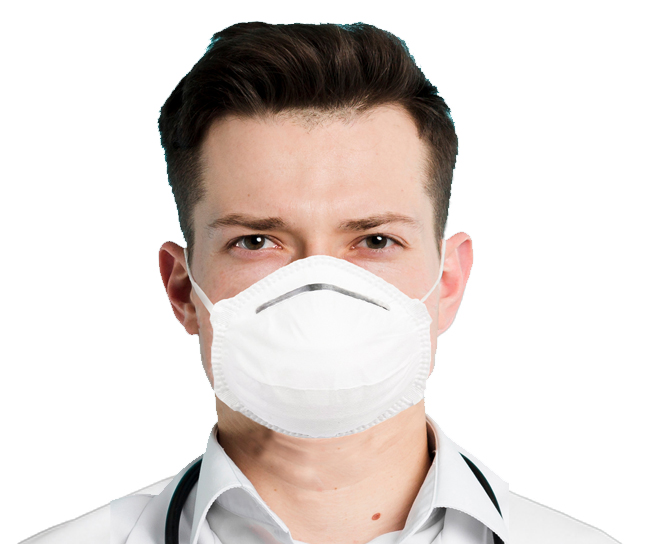Technical Information
How ASTM sets the standard
ASTM defines more than 12,500 international standards for safety and quality cross a wide variety of industries and services. Healthcare organizations globally adopt ASTM recommendations to implement best practices.
For masks, ASTM sets three levels of barrier protection:
Level 1: Low barrier protection
Generally used for short procedures and exams that don’t involve aerosols, spray or fluids.
To determine if a mask is Level 1, 2 or 3, ASTM evaluates several characteristics, including bacterial filtration efficiency, sub-micron particulate filtration, differential pressure and flame spread. The greatest difference between the three levels is in the mask’s resistance to penetration by synthetic blood.
How are masks typically selected today?
According to a recent survey conducted among hundreds of OR nurses, non-OR nurses, infection control practitioners and other clinicians, the most influential factor when selecting a mask is simply what’s available at the facility. Following that are training, comfort and habit. Only 44 percent of survey respondents ranked ASTM standards as an influencer—and that leads to a significant safety issue.
According to the same study, 75 percent of participants use the incorrect PPE for the procedure or setting.That may lead not only to staff and patient health risks, but also regulatory citations and fines. Following ASTM standards would help solve the problem, but awareness of them is low:
• 48 percent of OR staff are unaware of ASTM standards and the different levels of protection.• 57 percent of face mask units sold in 2016 did not have or claim an ASTM rating.
While 84 percent of facilities surveyed have a mask selection protocol, more than half of clinicians said they use their medical judgment when selecting a mask—even if that falls outside the protocol. The encouraging news is that 95 percent of those surveyed said they would change their selection if they had higher awareness of ASTM standards.
Choosing the right mask
A guide to ASTM barrier protection standards

Surgical masks
Surgical masks are fluid-resistant, disposable, and loose-fitting devices that create a physical barrier between the mouth and nose of the wearer and the immediate environment. They are for use in surgical settings and do not provide full protection from inhalation of airborne pathogens, such as viruses.

Surgical N95 Fold Style
Protection against residual surgical smoke or on patients with known or suspected aerosol transmittable diseases Used for situations where interacting with patients that may have airborne infectious disease

Surgical N95 Cup Style
Protection against residual surgical smoke or on patients with known or suspected aerosol transmittable diseases Used for situations where interacting with patients that may have airborne infectious disease
Understanding ASTM levels of protection is Key
| Codes | ASTM F2100-11 Levels |
| DT-MSK-001 | Level 1: Low barrier protection General use for short procedures and exams that don’t involve aerosols, spray or fluids |
| DT-MSK-002 | Level 2: Moderate barrier protection For low to moderate levels of aerosols, spray and/or fluids |
| DT-MSK-003 | Level 3: Maximum barrier protection For heavy levels of aerosols, spray and/ or fluids |
Contact Us
DemeTECH® Corporation
